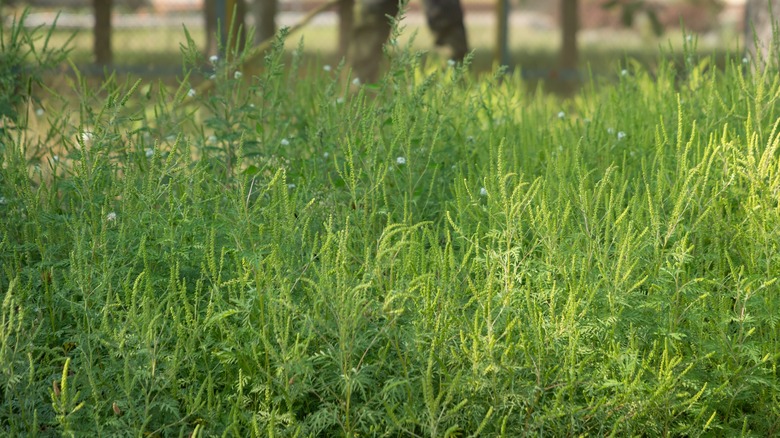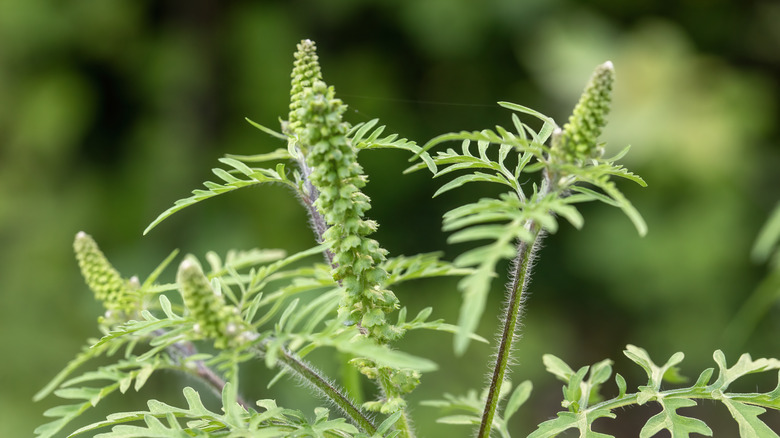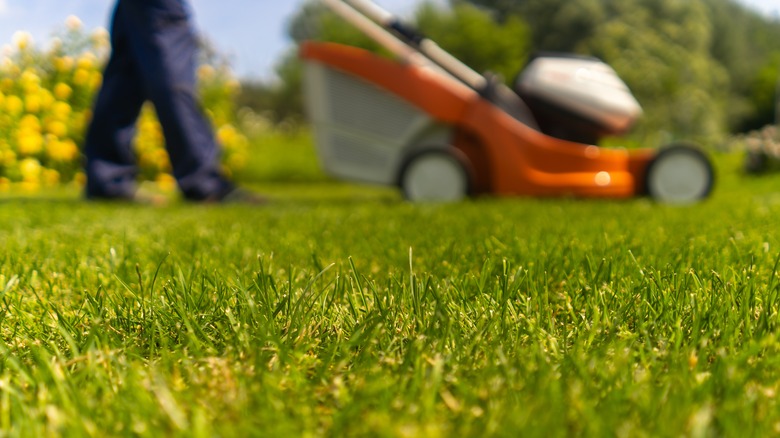Prevent Ragweed From Taking Over Your Yard By Adopting These Lawn Care Habits
Ragweed (Ambrosia artemisiifolia) can be a real pest, spoiling your pristine lawn and potentially provoking significant allergic reactions. It can be eradicated from your yard, though, with a little dedication and some crucial lawn care. Mowing your grass to a certain height and amending your yard's soil with fertilizer can both be meaningful steps in preventing ragweed. Ragweed can grow back year after year, so expelling it from your yard completely may take a little bit of commitment and patience, as it may take several annual cycles before your yard is completely ragweed-free.
Other ways to prevent a ragweed infestation in the first place include keeping an eye out for germinating ragweed plants and snuffing them out early when renovating your lawn area. Ragweed can often be the first plant to settle and take root in soil that has recently been disturbed, as it is hardier than many other plants. To spot rag weed, look for adult plant flowers with fern-like leaves, often easily identifiable when it is growing in your lawn because it is visually quite distinctive from different kinds of grass.
How ragweed spreads
Ragweed is native to North America and grows easily in most climates and environments within the continent except for the most northern zones. It spreads quite easily, thanks to its ability to produce 3,500 seeds per plant. Ragweed has even become an invasive species on other continents and ecosystems, and is proliferating in wider areas due to climate change and rapidly increasing global temperatures.
Ragweed can be a concern even when it is growing in regions where it is not considered an invasive species. Not only does it crowd out your lawn, making for not the greatest aesthetic, its flowers produce large amounts of pollen, which can aggravate and activate allergy symptoms (via the Asthma and Allergy Foundation of America). For people with asthma, these allergic responses can trigger a runny nose and swelling around the eyes. Ragweed plants are prolific at producing pollen and often continue until they are killed by the first frost of the season, meaning allergic reactions could be a concern past the typical allergy season of late spring and early summer.
How to control ragweed
Regular lawn maintenance can be helpful in abating a ragweed problem, as the healthier the lawn is, the better its ability to keep out many types of problematic weeds, including ragweed. If you attempt to control ragweed by mowing, it's recommended to mow on a regular schedule, as the plant can grow back quickly. Regular mowing, once every week or so, will help prevent the plant from flowering and spreading its seeds. However, ragweed can reproduce using a rhizome system, meaning its roots can produce new growth from within the top 5 to 10 inches of soil. Digging these roots out may slow ragweed's spread, but if you are someone who has strong allergic reactions to ragweed pollen, it may be safest to avoid any physical contact with any part of the plant.
Instead, it may be worthwhile to tackle the problem from the ground up. Ragweed usually does well in more harsh or barren soil conditions, often thriving in heavier types of soil that might kill other plants. The corollary of ragweed being able to handle lower-quality soil is that it can struggle in so-called "good" soil, including soil that has high levels of nitrogen, potassium, and phosphorus. Amending your yard's soil with fertilizer containing those chemicals could not only help your grass, it might choke off your ragweed problem at the root.


